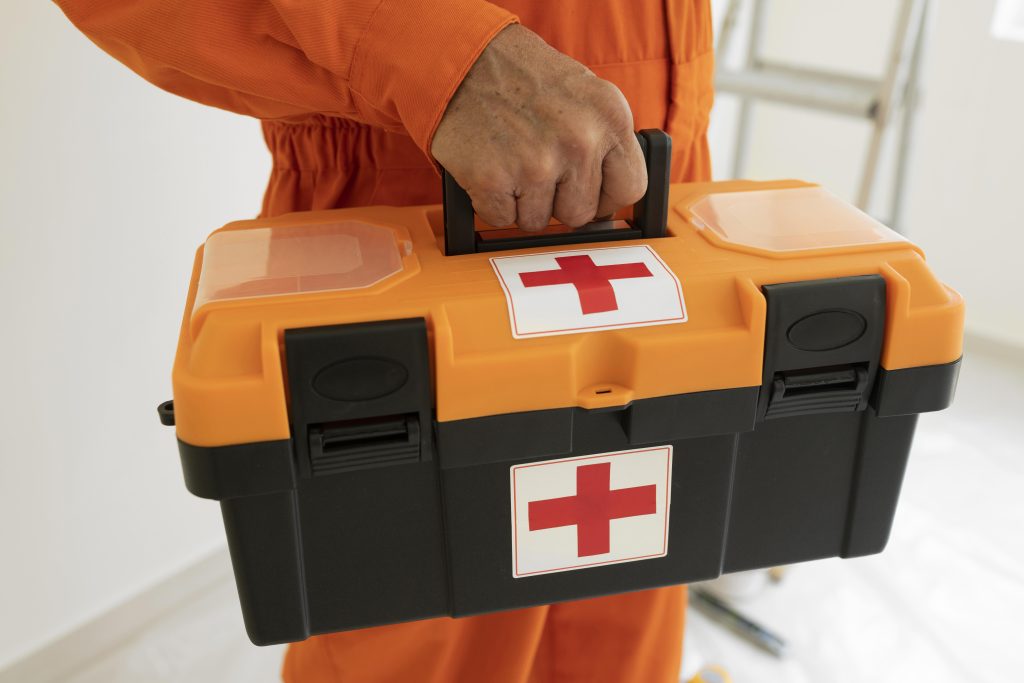Introduction
In times of emergency, having a well-stocked first aid kit can make a significant difference. At Health Emergency Initiative (HEI), we believe everyone should be prepared for unexpected situations.
Whether it’s a minor injury at home or a road accident, a well-prepared first aid kit allows you to:
- Provide immediate care for injuries, for yourself and others
- Prevent infections
- Increase the chances of survival in severe cases
A properly equipped emergency first aid kit can save lives and provide immediate care until professional help arrives. Here’s a comprehensive guide on building one that will ensure you are ready to handle various emergencies.
Essential Items for Your First Aid Kit

1) Basic Medical Supplies
- Adhesive Bandages (Band-Aids): Various sizes for minor cuts and abrasions
- Sterile Gauze Pads: For larger wounds and to stop bleeding
- Adhesive Tape: To secure bandages and gauze
- Elastic Bandages: For sprains and strains
2) Antiseptics and Ointments
- Antiseptic Wipes: For cleaning wounds
- Hydrogen Peroxide: For disinfecting wounds
- Antibiotic Ointment: To prevent infections
- Hydrocortisone Cream: For insect bites and rashes
3) Handy Tools
- Tweezers: For removing splinters and debris
- Scissors: For cutting tape, gauze or clothing
- Disposable Gloves: For protecting yourself and the injured person
- Safety Pins: For securing bandages
- Flashlight with Extra Batteries: For visibility in low-light situations
4) Emergency Contact Information
- List of Emergency Numbers: Including official emergency numbers, local hospitals, poison control and family contacts
- Personal Medical Information: Including information about allergies, medications and the medical history of family members
3 Tips for Maintaining Your First Aid Kit

- Regularly Check and Replenish: Ensure your first aid kit is always stocked with the necessary items. Replace used or expired items promptly.
- Store in an Accessible Location: Keep your first aid kit in a place where everyone in your household knows and can access it easily. Carry an extra kit in your vehicle for when you are driving.
- Customize for Personal Needs: Tailor your first aid kit to meet the specific needs of your family members, such as adding personal medications or special medical equipment.
Conclusion
Building an emergency first aid kit is a vital step in being prepared for any situation. At Health Emergency Initiative, we encourage everyone to take the time to assemble and maintain a comprehensive first aid kit. By being prepared, you can provide immediate and effective care in emergencies, potentially saving lives and reducing the severity of injuries.
To better equip yourself for emergencies, consider signing up for HEI’s First Responders training. Our training includes First Aid training, CPR training and additional skills to empower you to handle emergencies effectively.
For more information, visit: https://hei.org.ng/get-involved.


This is very educative and enlightening